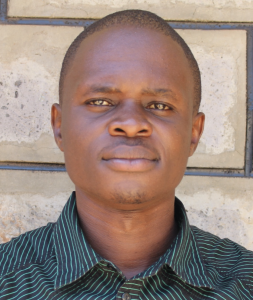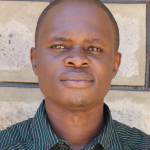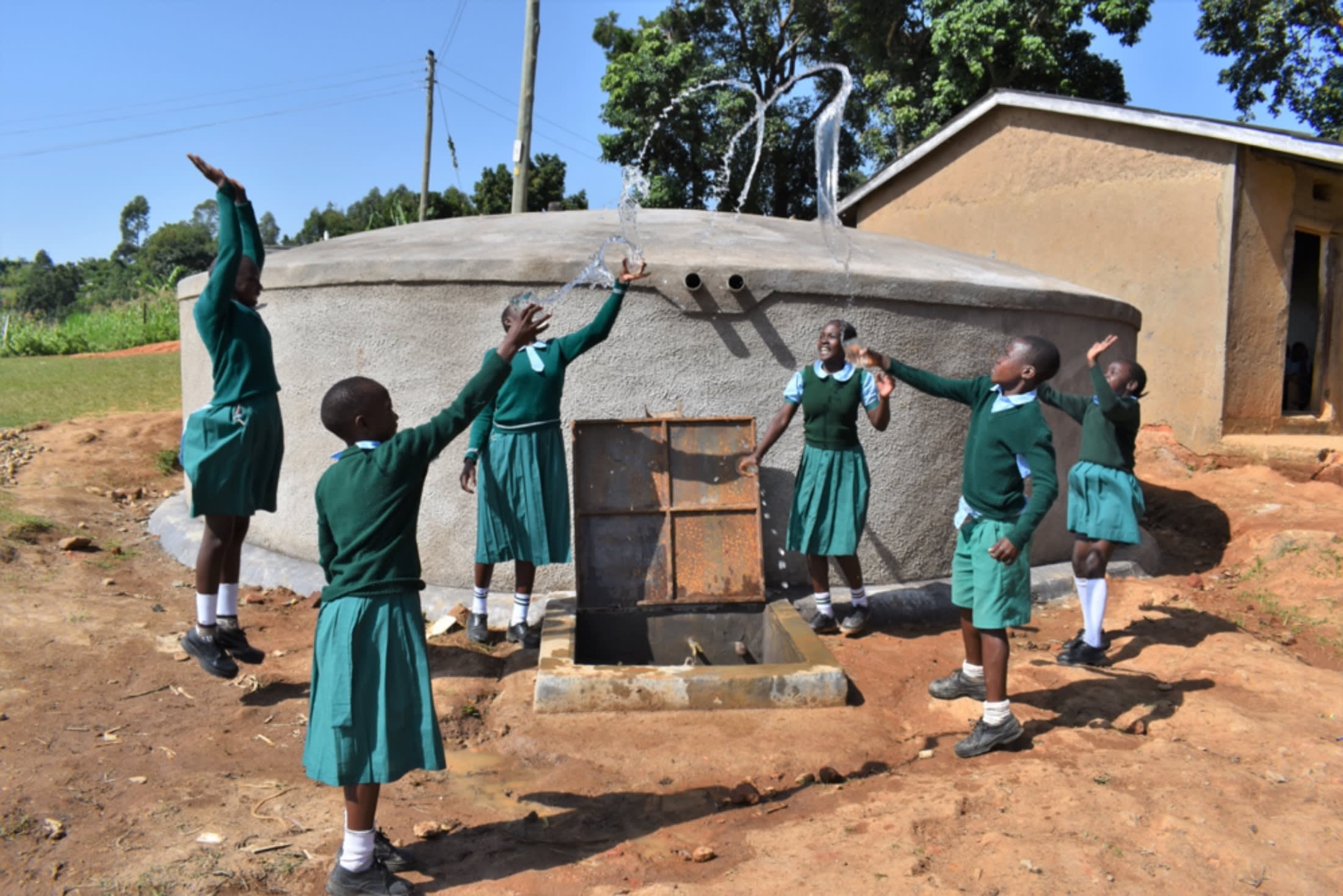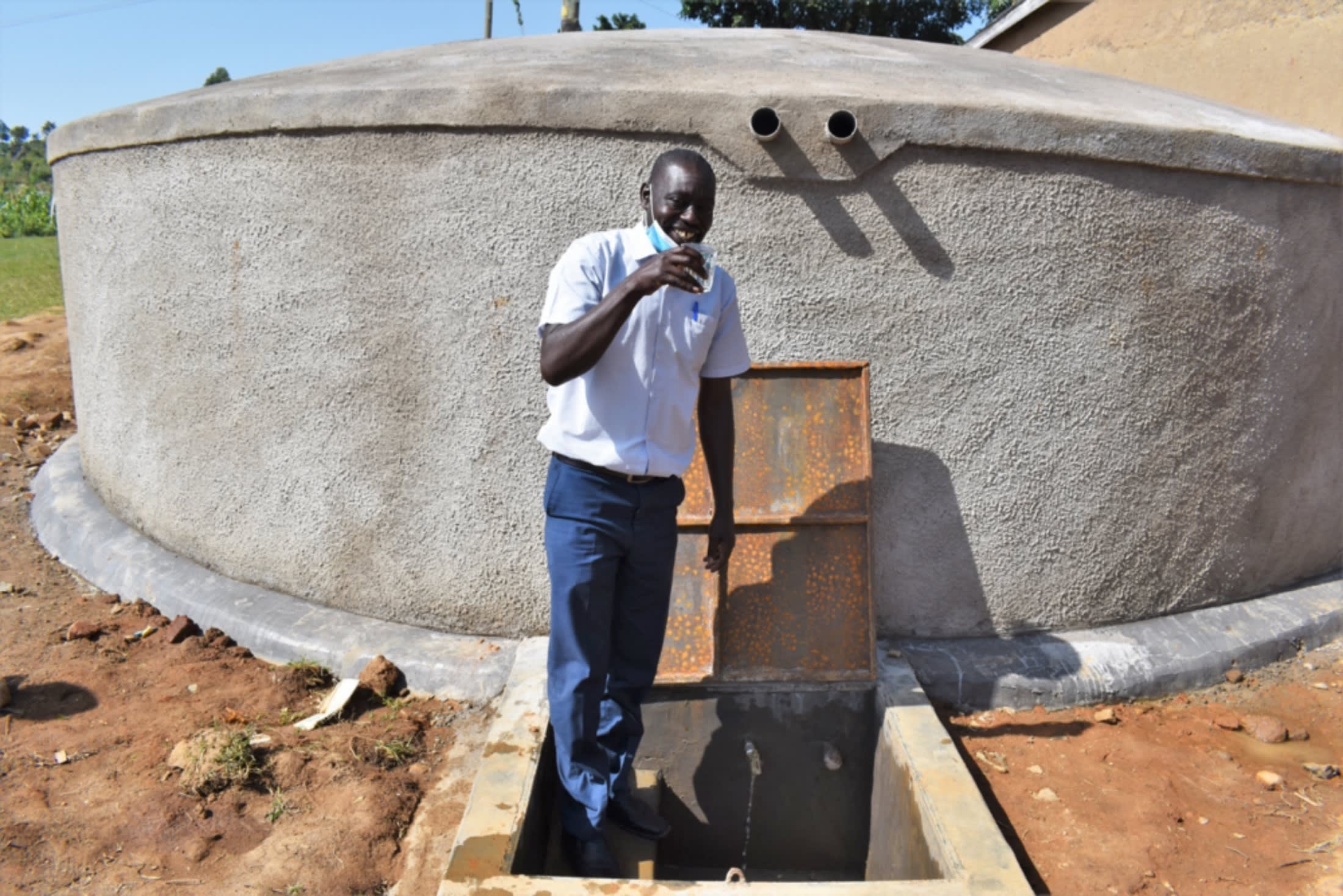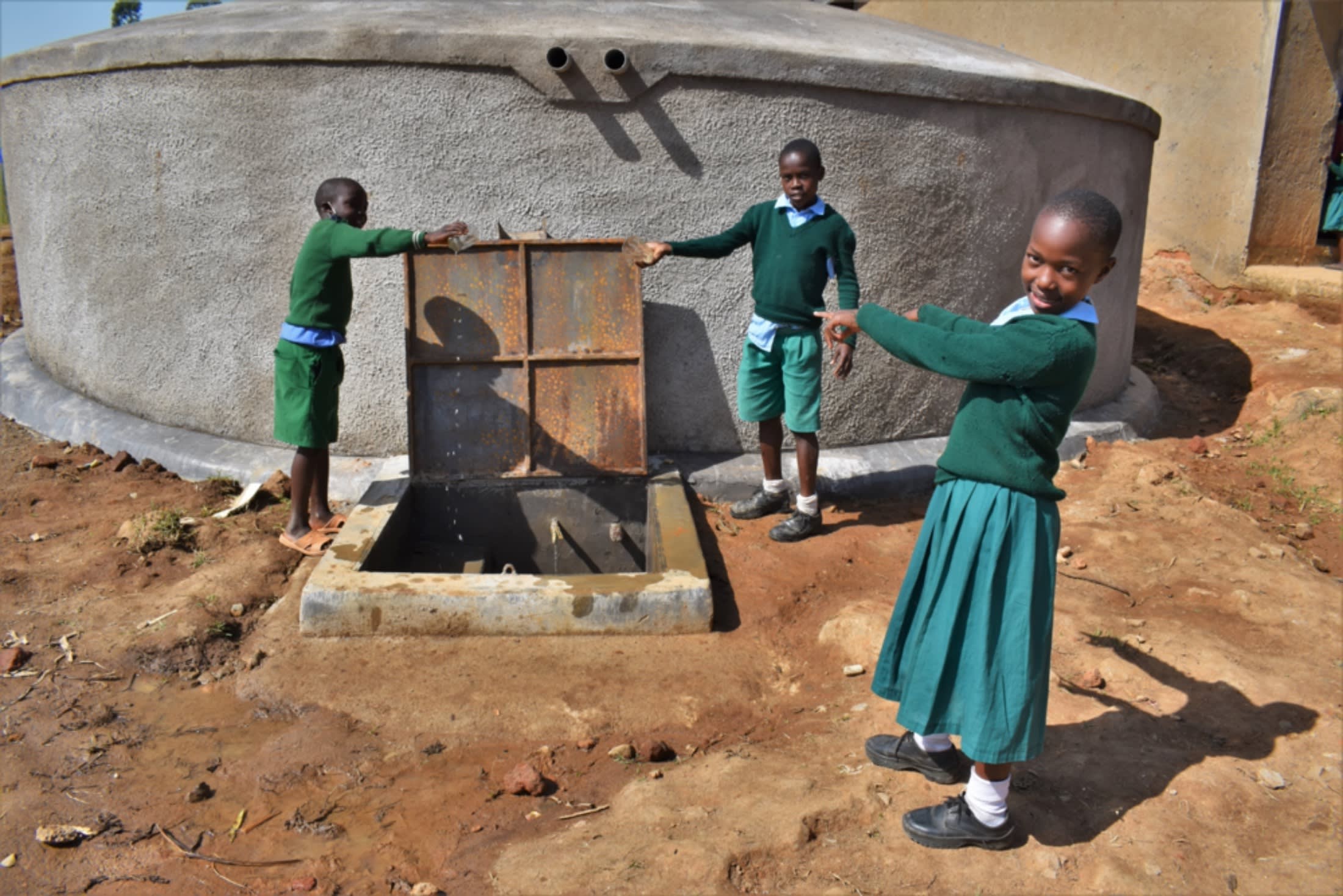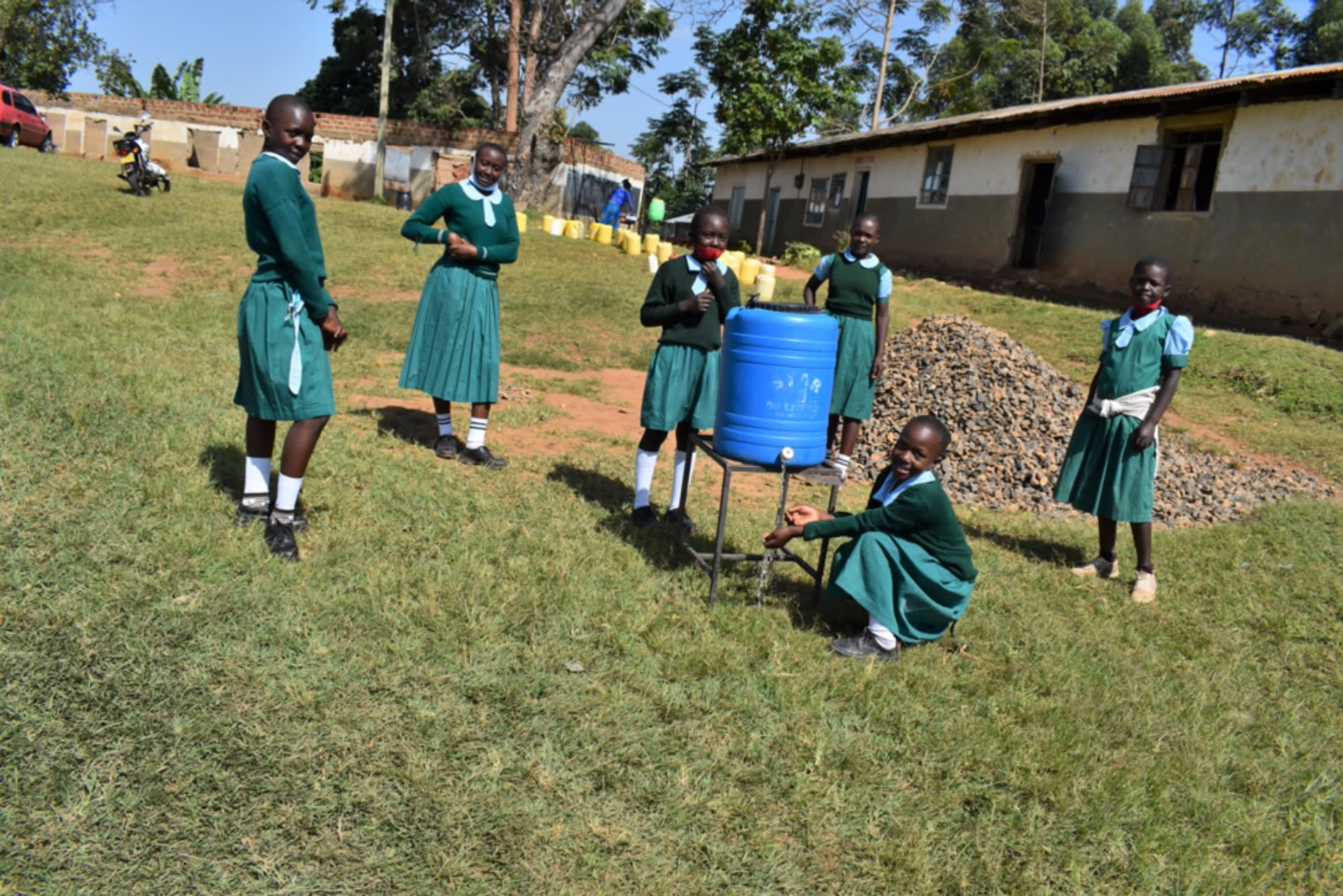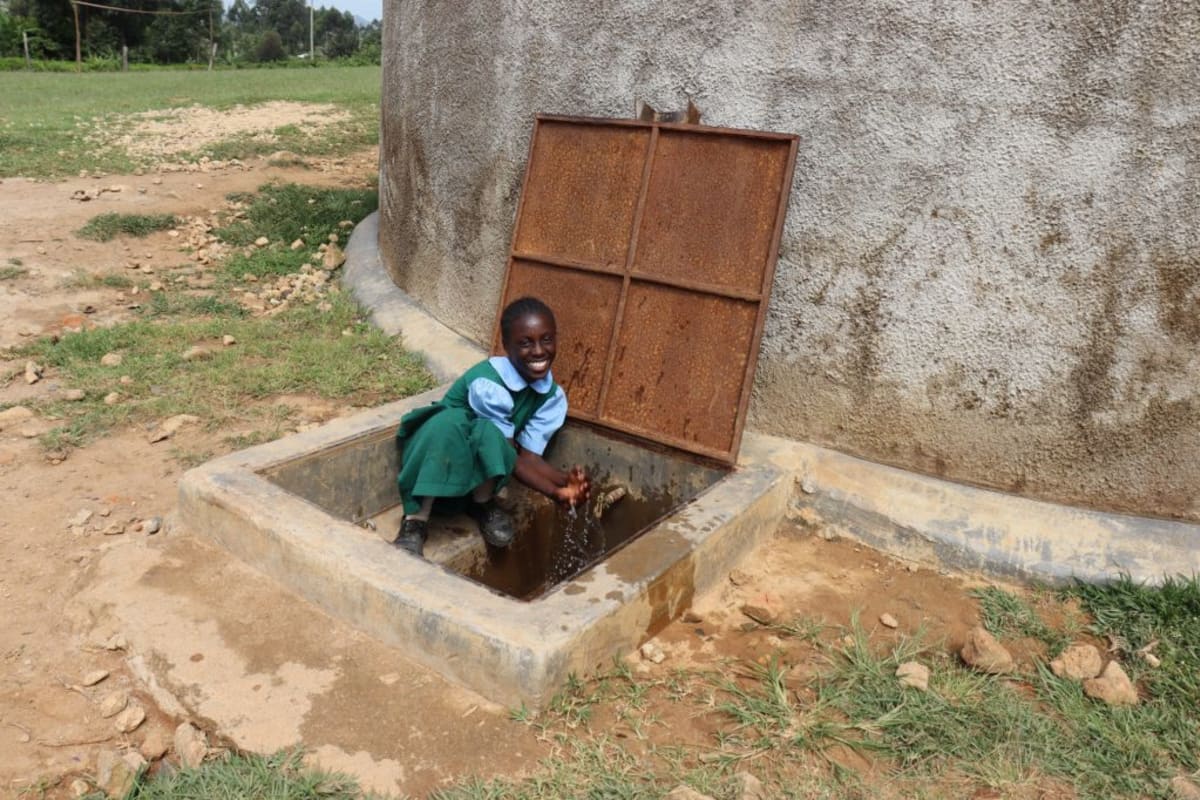"Water is a precious commodity and the scarcity of it in an institution affects the entire school's functionality," said the Head Teacher at St. Kizito Kimarani Primary School, Mr. Joshua Rotich.
St. Kizito Kimarani Primary School was established in 1952 by Catholic missionaries with an initial enrollment of just 22 students and 2 teachers. It has since grown to its current population of 432 students and 13 teachers and staff, yet it still has no water source on campus.
An average day for pupils here begins at 7:00 am when they arrive carrying water from home. As students' personal water is the sole water source the school depends on for all drinking, cooking, and cleaning needs, breaks for students to go home and fetch more water are intertwined into normal class activities. Students are always sent back during lunchtime too. The path between their homes and the school is long and hilly, proving a daunting task for any child to traverse several times a day while carrying such a heavy burden with them.
This relentless schedule of fetching water means classes are constantly disrupted and the pupils get too tired to concentrate on their classwork. Some students end up skipping afternoon classes altogether for fear of not being able to carry enough water back with them, either because they could not find enough or because they are too tired to make the trip. The school's academic performance is suffering because of it, to the chagrin of both teachers and students.
Students source their water for school from multiple sources at home. Without the school's ability to monitor the students at home, teachers are wary of the quality and safety of the water their pupils collect. Upon our inspection, the jerrycans students are using to carry water from home to school left a lot to be desired in terms of cleanliness. They were very dirty and they did not have covers.
Even if the water source they used was clean, a dirty container can instantly contaminate it and make it unsafe for drinking. Because the water is combined for use, even 1 contaminated source means everyone suffers. Water-related illnesses are another factor driving absenteeism in this school due to the consumption of the water.
"Personally, I am not able to access clean and safe water for drinking, making me gamble with the water students bring to school. On several occasions, I have had sore throat challenges and this I can relate to the water I drink here at school," said Deputy Head Teacher Ms. Sally Liguzi.
Compounding the students' and teachers' water-related health problems is the inability to maintain high standards of sanitation and hygiene due to their severe lack of clean water. Students are not fully able to clean the latrines, the school cook cannot always properly clean her cooking utensils, and handwashing is unheard of.
Then there is the poor state of the latrines. The girls' latrines are almost full and some of the doors are completely off their hinges, with pieces of bricks falling down around them. The girls' privacy is totally sacrificed and their safety put in danger just by using these latrines, but it is all they have. Both the girls' and boys' latrines are also overcrowded.
What We Can Do:
Rain Tank
A 75,000-liter rainwater catchment tank will help alleviate the water crisis at this school. The school will help collect the needed construction materials such as sand, bricks, rocks, and water for mixing cement. We will complement their materials by providing an expert team of artisans, tools, hardware, and the guttering system. Once finished, this tank will begin catching rainfall that will be used by the school’s students and staff for drinking, handwashing, cooking, cleaning, and much more.
We and the school strongly believe that all of these components will work together to improve standards at this school, which will help lead to better student academic performance and will help to unlock the potential for these students to live better, healthier lives.
Handwashing Stations
There is currently nowhere for students to wash their hands after using the latrines or before eating lunch, let alone the water to do so.
The student health club will oversee the 2 new handwashing stations we will provide, and make sure they are kept clean and in working condition. The club leaders will fill the handwashing stations with water daily and make sure they are always supplied with a cleaning agent such as soap or ash.
VIP Latrines
We will construct 2 triple-door latrine blocks using local materials that the school will help gather. 3 doors will serve the girls while the other 3 will serve the boys. All of these new latrines will have cement floors that are designed to be easy to use and to clean. And with a rain tank right on school property, there should be enough water to keep them clean.
Training on Health, Hygiene, COVID-19, and More
We will hold a 1-day intensive training session with students, teachers, and parents. This training will cover a wide range of topics including COVID-19 symptoms, transmission routes, and prevention; personal and environmental hygiene; and the operation and maintenance of the rain tank, latrines, and handwashing stations. There will be a special emphasis on handwashing.
Our team of facilitators will use a variety of methods to train, including participatory hygiene and sanitation transformation, and asset-based community development. We will initiate a student health club, which will prepare students to lead other pupils into healthy habits at school and at home. We will also lead lectures, group discussions, and provide illustrative handouts to teach health topics and ways to promote good hygiene practices within the school including handwashing and water treatment. We will then conduct a series of follow-up trainings before transitioning to our regularly scheduled support visits throughout the year.

 Rainwater Catchment
Rainwater Catchment
 Rehabilitation Project
Rehabilitation Project












